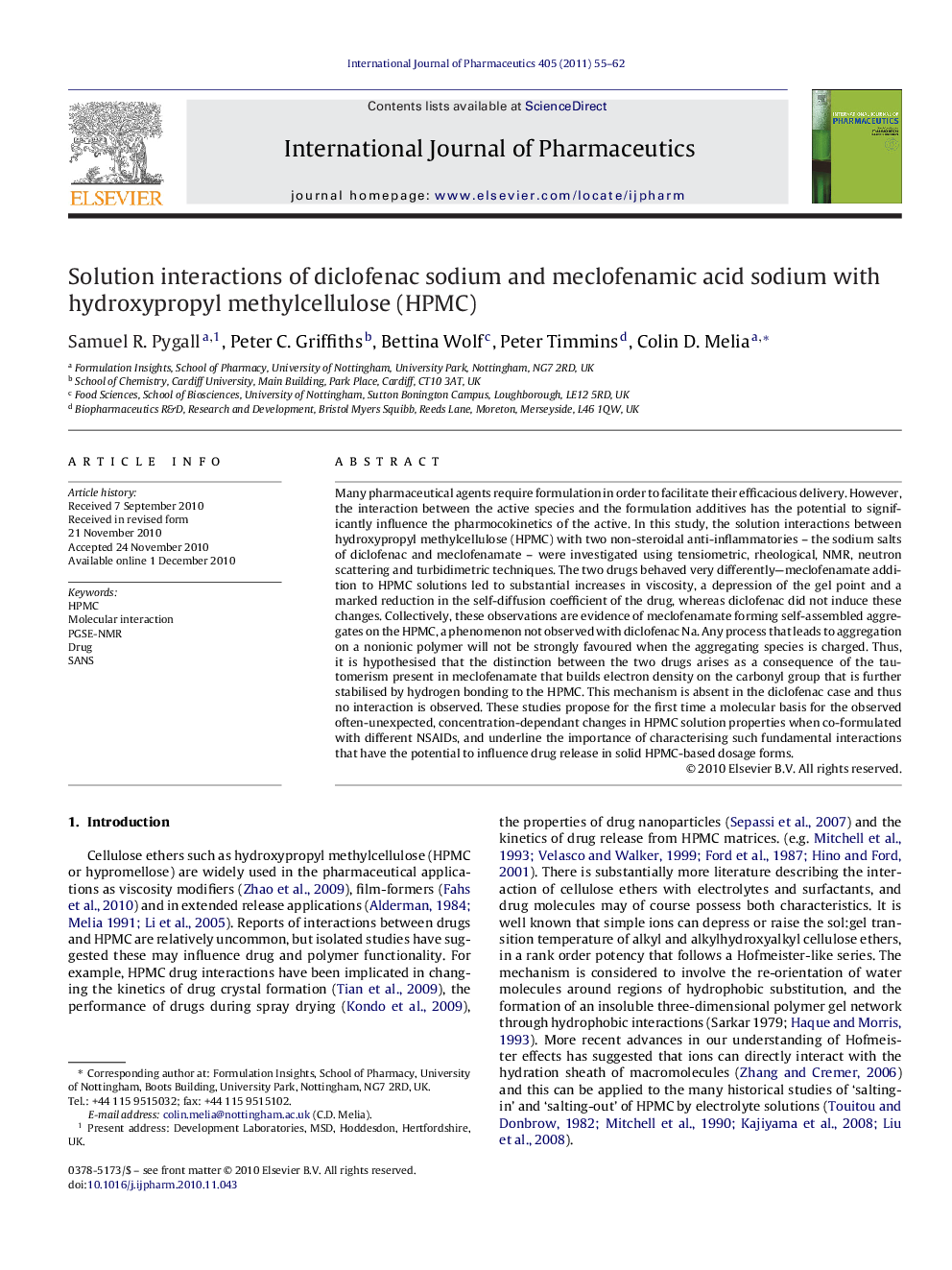| کد مقاله | کد نشریه | سال انتشار | مقاله انگلیسی | نسخه تمام متن |
|---|---|---|---|---|
| 2503638 | 1557437 | 2011 | 8 صفحه PDF | دانلود رایگان |

Many pharmaceutical agents require formulation in order to facilitate their efficacious delivery. However, the interaction between the active species and the formulation additives has the potential to significantly influence the pharmocokinetics of the active. In this study, the solution interactions between hydroxypropyl methylcellulose (HPMC) with two non-steroidal anti-inflammatories – the sodium salts of diclofenac and meclofenamate – were investigated using tensiometric, rheological, NMR, neutron scattering and turbidimetric techniques. The two drugs behaved very differently—meclofenamate addition to HPMC solutions led to substantial increases in viscosity, a depression of the gel point and a marked reduction in the self-diffusion coefficient of the drug, whereas diclofenac did not induce these changes. Collectively, these observations are evidence of meclofenamate forming self-assembled aggregates on the HPMC, a phenomenon not observed with diclofenac Na. Any process that leads to aggregation on a nonionic polymer will not be strongly favoured when the aggregating species is charged. Thus, it is hypothesised that the distinction between the two drugs arises as a consequence of the tautomerism present in meclofenamate that builds electron density on the carbonyl group that is further stabilised by hydrogen bonding to the HPMC. This mechanism is absent in the diclofenac case and thus no interaction is observed. These studies propose for the first time a molecular basis for the observed often-unexpected, concentration-dependant changes in HPMC solution properties when co-formulated with different NSAIDs, and underline the importance of characterising such fundamental interactions that have the potential to influence drug release in solid HPMC-based dosage forms.
Figure optionsDownload as PowerPoint slide
Journal: International Journal of Pharmaceutics - Volume 405, Issues 1–2, 28 February 2011, Pages 55–62